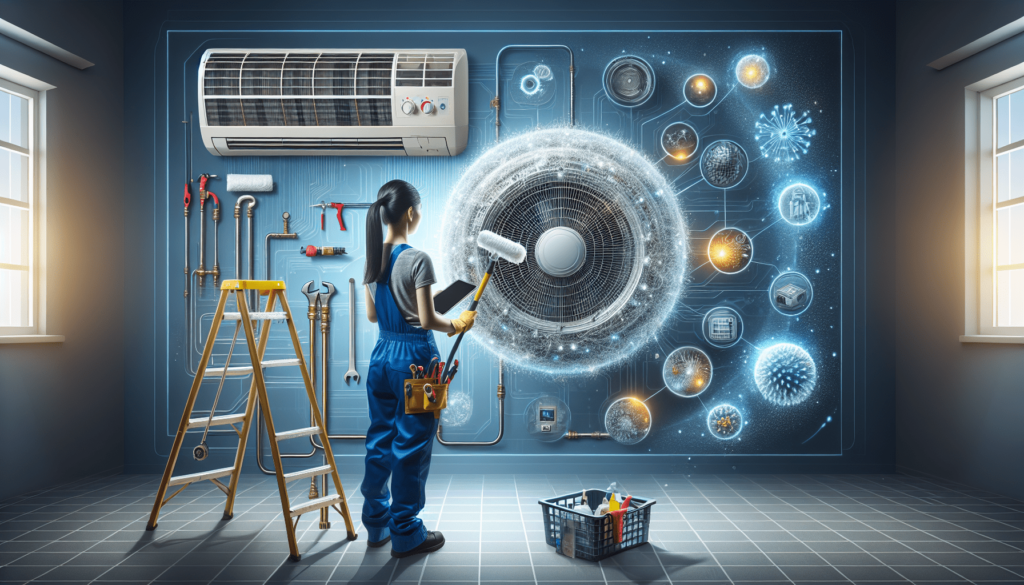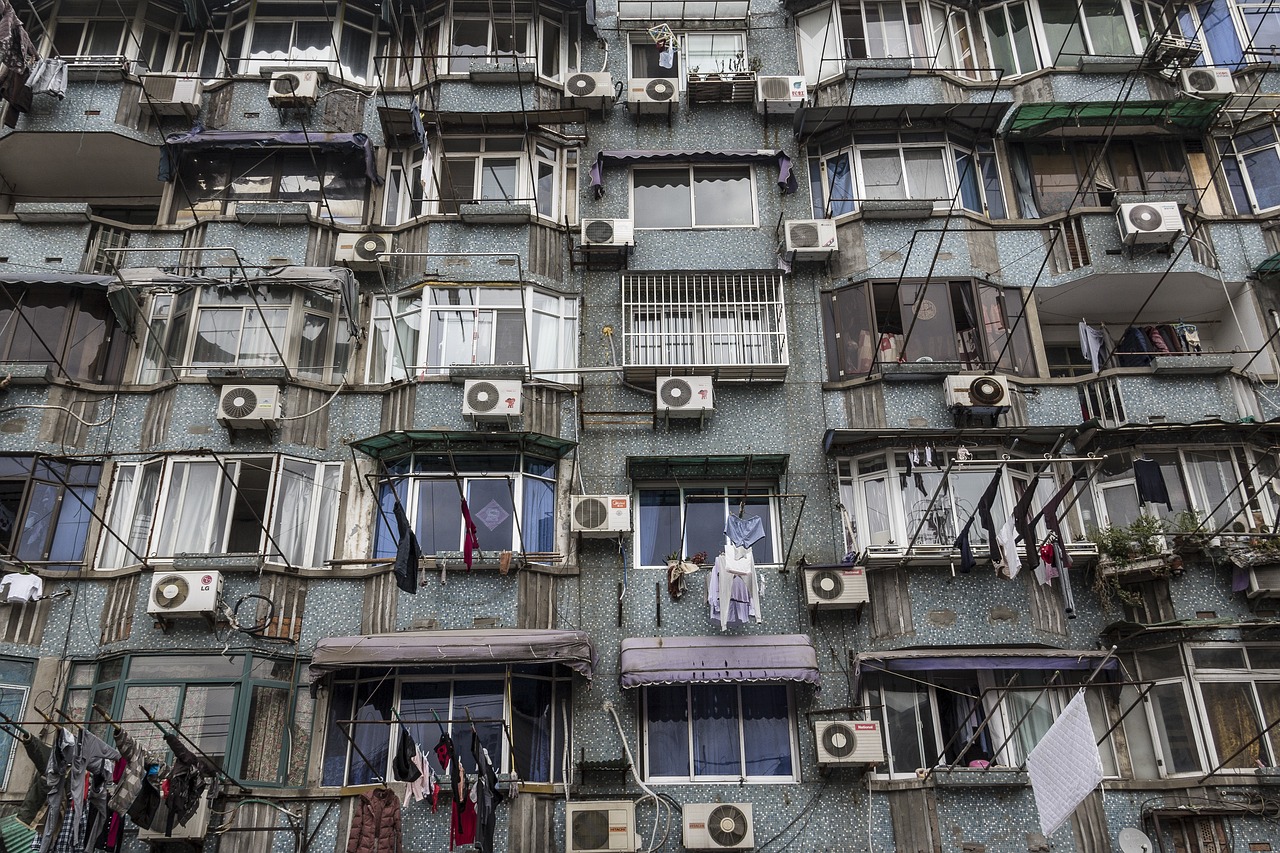Maintaining a clean and efficient air conditioning system is crucial for the comfort and well-being of any space. One integral aspect of this maintenance routine is regularly cleaning the A/C condensate lines. These lines are responsible for draining the accumulated moisture from the air conditioner, preventing water damage and ensuring optimal performance. In this comprehensive guide, you will discover a step-by-step process on how to effectively clean A/C condensate lines, providing you with the knowledge and tools necessary to keep your cooling system running smoothly and efficiently.

This image is property of pixabay.com.
Understanding the Importance of Clean A/C Condensate Lines
Basic Function of A/C Condensate Lines
A/C condensate lines play a crucial role in maintaining the efficiency and performance of your air conditioning system. When your A/C unit operates, it produces condensate, which is excess moisture that needs to be drained away. The condensate lines serve as a pathway for this moisture to be removed from the system.
The Impact of Blockages on A/C Performance
Blockages in the A/C condensate lines can have detrimental effects on the performance of your air conditioning system. When the lines become clogged, the condensate cannot properly drain away, leading to water accumulation in the system. This buildup of water can cause several problems, such as decreased cooling efficiency, decreased air quality, and even potential damage to the A/C unit itself.
Preventative Maintenance Benefits
Regularly cleaning and maintaining your A/C condensate lines is essential to ensure optimal performance and longevity of your air conditioning system. By incorporating preventative maintenance into your routine, you can avoid costly repairs, improve energy efficiency, and prolong the lifespan of your A/C unit.
Identifying Signs of Blocked A/C Condensate Lines
Visual Inspection of the Drain Pan
One way to identify possible blockages in your A/C condensate lines is by visually inspecting the drain pan. The drain pan is where the condensate initially collects before being directed through the drain lines. If you notice an excessive amount of water in the drain pan or any signs of debris accumulation, it may indicate a blockage in the condensate lines.
Identifying Signs of Water Leaks
Another indication of blockages in the A/C condensate lines is the presence of water leaks around the A/C unit or surrounding areas. If you notice water pooling or dripping from the A/C unit, it could be a sign that the condensate lines are clogged and unable to properly drain the moisture away.
A/C Performance Issues Indicating Blocked Lines
Blocked condensate lines can also manifest in the form of A/C performance issues. If you experience reduced cooling efficiency, uneven cooling, or increased humidity indoors, it could be a result of blockages in the condensate lines. These blockages restrict the proper flow of condensate, leading to inefficient operation of the A/C system.
Safety Measures Before Cleaning A/C Condensate Lines
Switching Off the Power
Before attempting to clean the A/C condensate lines, it is crucial to switch off the power supply to the A/C unit. This ensures your safety and prevents any potential accidents or electrical hazards while working on the system.
Preparing Adequate Protective Gear
Cleaning A/C condensate lines may involve coming into contact with water, cleaning solutions, and potentially harmful substances. To protect yourself, it is essential to wear appropriate protective gear, such as gloves, goggles, and non-slip footwear.
Ensuring a Clean and Safe Working Environment
Creating a clean and safe working environment is vital to prevent accidents and damage to your property. Clear the area around the A/C unit of any obstacles or debris that may hinder your work and ensure proper lighting for better visibility.
Gathering Required Cleaning Materials
List of Standard Commercial Products
To effectively clean your A/C condensate lines, you may consider using standard commercial products specifically designed for this purpose. These products are readily available in the market and often contain specialized cleaning agents that help dissolve blockages and prevent future buildup.
DIY, Eco-friendly Cleaning Solutions
For those who prefer a more environmentally friendly approach, there are several DIY cleaning solutions you can make at home. One popular option is mixing equal parts distilled white vinegar and water to create a natural cleaning solution that effectively removes blockages and disinfects the condensate lines.
Collecting Necessary Tools
To facilitate the cleaning process, it is essential to gather the necessary tools. These may include a wet/dry vacuum, a small brush or pipe cleaner, a screwdriver (if required for accessing the drain pan), and a bucket or container for collecting and disposing of any debris or water.

This image is property of pixabay.com.
Locating the A/C Condensate Drain Line
Identifying Installation Points
To clean the A/C condensate lines, it is crucial to locate the drain line installation points. Typically, drain lines are connected to the A/C unit near the evaporator coil and run through the walls, floors, or attics before eventually draining externally. Familiarize yourself with the A/C system’s layout and follow the drain line to identify the access points.
Recognizing the Anatomy of an A/C Condensate Line
Understanding the anatomy of an A/C condensate line is important to know where to clean and how to properly maintain it. The condensate line is made up of a series of pipes and fittings that transport the condensate away from the A/C unit. It may have additional components like an inline trap or access points for easier maintenance.
Steps to Clean A/C Condensate Line from Outside Access
Locating and Accessing the Drain Line Outside
To clean the A/C condensate line from outside access, locate the endpoint of the drain line outside your home or building. It is usually found near the foundation or tied into a plumbing line. Once located, remove any covering or protective cap to gain access to the drain line.
Using a Wet/Dry Vacuum
Once you have access to the drain line, use a wet/dry vacuum to suction out any debris or accumulated water. Attach the vacuum hose to the open end of the drain line and switch it on. Move the hose back and forth along the length of the drain line to dislodge and remove any blockages.
Applying the Cleaning Solution
After vacuuming, it is recommended to flush the drain line with a cleaning solution to further remove any remaining debris or buildup. Pour the chosen cleaning solution into the open end of the drain line and allow it to flow through and clean the entire length of the line. Give it some time to break down any remaining blockages or residue before proceeding.

This image is property of pixabay.com.
Steps to Clean A/C Condensate Line from Inside Access
Finding and Accessing the Drain Line Inside
If your A/C condensate line has an inside access point, locate it before proceeding with the cleaning process. This access point is typically found near the air handler unit or in the vicinity of the evaporator coil. Remove any covers or fittings to gain access to the drain line.
Removing the PVC Cap
Once you have accessed the drain line from the inside, remove any PVC caps or fittings that are obstructing the flow of the line. These caps are usually installed to prevent backflow or to provide an access point for cleaning and maintenance.
Applying Cleaning Solution
Similar to the outside access method, apply the chosen cleaning solution into the open end of the drain line. Allow the solution to flow through the drain line, breaking down any accumulated blockages or buildup. Be mindful of the quantity of solution used, ensuring that it effectively reaches all areas of the drain line.
How to Clean the A/C Drain Pan
Removing and Emptying the Drain Pan
Cleaning the A/C condensate lines should also involve cleaning the drain pan. Begin by locating the drain pan, which is positioned beneath the evaporator coil. Carefully remove the drain pan while ensuring that any excess water or debris doesn’t spill out onto the surrounding area. Empty the contents of the pan into a suitable container or drain.
Cleaning Process
To clean the drain pan, thoroughly wash it with a suitable cleaning solution or mild detergent. Use a brush or sponge to scrub away any residue, mold, or algae that may have accumulated within the pan. Rinse the pan with clean water to remove any remaining cleaning solution, and ensure it is free from any debris before reinstalling.
Reinstalling the Drain Pan
Once the drain pan is clean and dry, carefully reinstall it back into its original position. Ensure that it fits securely and the drain line connects properly. Any attachments, like PVC caps or fittings, should also be reinstalled if necessary. Properly sealing the drain pan and ensuring a secure connection prevents any future leaks or overflow issues.

Preventing Future Blockages
Regular Cleaning of the A/C Condensate Line
To prevent future blockages and maintain optimal A/C performance, it is recommended to incorporate regular cleaning of the condensate lines into your maintenance routine. Cleaning the lines every three to six months, or more frequently if needed, helps remove any potential buildup and keeps the lines clear and free-flowing.
Installing an Inline Trap
Installing an inline trap is another preventive measure that can help minimize the occurrence of blockages in the condensate lines. An inline trap is a fitting that is installed within the drain line, acting as a barrier to prevent debris and sediment from entering the line. This reduces the chances of clogs and ensures a smoother flow of condensate.
Utilizing Algae Tablets
Algae growth is a common cause of condensate line blockages. To combat this issue, you can utilize algae tablets designed specifically for A/C systems. These tablets work by releasing chemicals into the condensate lines, preventing algae growth and reducing the need for frequent cleanings. Follow the manufacturer’s instructions for proper usage and dosage.
When to Call a Professional
Identifying Stubborn Blockages
While cleaning A/C condensate lines can typically be done as a DIY task, there may be instances where professional assistance is required. Stubborn blockages that cannot be cleared using conventional methods may indicate a more complex issue in the A/C system. In such cases, it is advisable to contact a professional HVAC technician to diagnose and resolve the problem.
Recognizing A/C Malfunctions
If you notice persistent A/C malfunctions, such as frequent breakdowns, unusual noises, or inconsistent cooling, it may indicate a more significant issue with your air conditioning system. In these situations, it is best to enlist the help of a professional to thoroughly inspect and assess the condition of the A/C unit, including the condensate lines.
Regular Maintenance Services
Even if you are diligent with cleaning and maintenance, it is still important to schedule regular maintenance services for your A/C system. Professional HVAC technicians can conduct comprehensive inspections, cleanings, and tune-ups to ensure optimal performance and identify any potential issues before they worsen. Regular maintenance services help extend the lifespan of your A/C unit and minimize the chances of unexpected breakdowns.
In conclusion, understanding the importance of clean A/C condensate lines is vital for the proper functioning and longevity of your air conditioning system. By regularly cleaning and maintaining the condensate lines, you can prevent blockages, improve A/C performance, and avoid costly repairs. Remember to follow proper safety measures, gather the necessary cleaning materials, and locate the access points for effective cleaning. Additionally, implementing preventive measures like regular cleanings, installing an inline trap, and utilizing algae tablets can help minimize the occurrence of future blockages. If you encounter stubborn blockages, A/C malfunctions, or for overall system maintenance, it is recommended to seek professional assistance. With proper care and maintenance, your A/C condensate lines will ensure optimal cooling efficiency and a comfortable indoor environment.


